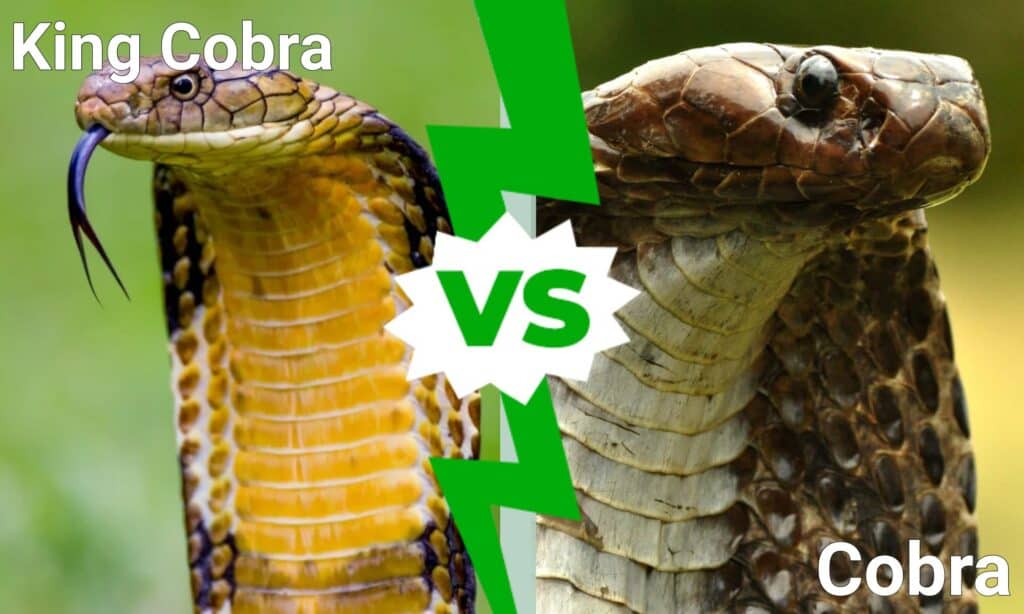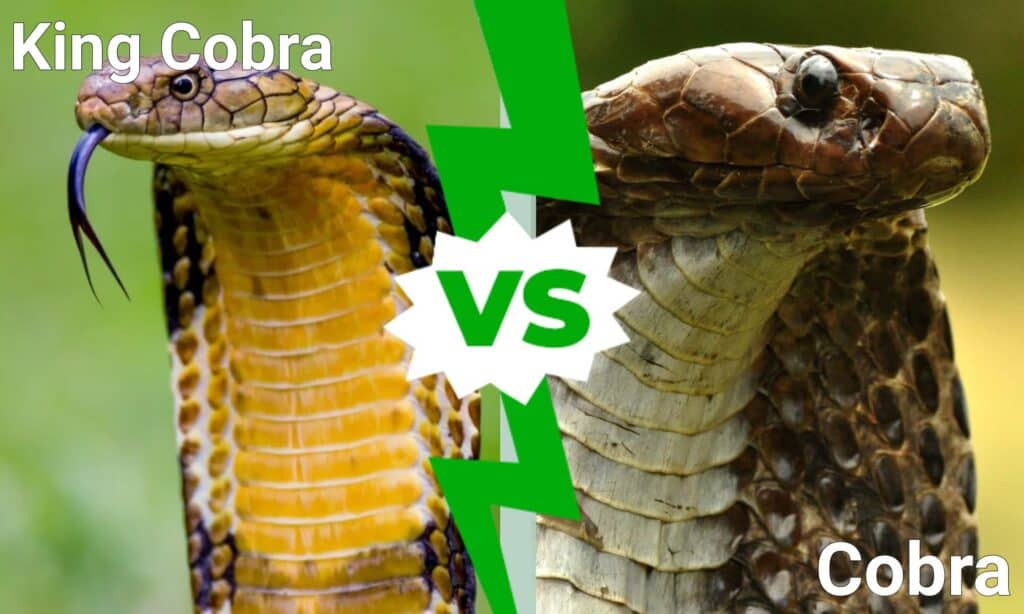Cobras and other venomous snakes have always been feared and admired by humans. But have you ever wondered how they differ from each other? In this article, we will delve deep into the characteristics and behavior of cobras and other venomous snakes, and compare them to see what makes them unique.
Cobras are one of the deadliest venomous snakes in the world, known for their hood and aggressive behavior. Compared to other venomous snakes, cobras have longer fangs, larger venom glands, and can inject a higher volume of venom. They are also more likely to stand their ground and attack when threatened. Other venomous snakes, such as vipers and pit vipers, rely more on their camouflage and quick strikes to catch prey or defend themselves.

Cobra Vs. Other Venomous Snakes: a Comparison of Their Characteristics and Behavior
Venomous snakes are a fascinating but dangerous species. Among them, cobras are one of the most well-known and feared. However, how do they compare to other venomous snakes? In this article, we will be comparing cobras to other venomous snakes in terms of their characteristics and behavior.
Physical Characteristics
Venomous snakes have distinct physical characteristics that set them apart from non-venomous ones. Cobras, for example, have a hood that they can flare out when they feel threatened. This hood is made up of elongated ribs that can be raised to create a distinctive shape. Other venomous snakes, such as vipers and rattlesnakes, have triangular-shaped heads and vertical pupils.
In terms of size, cobras are generally larger than most venomous snakes. The Indian cobra, for example, can reach up to 6 feet in length, while the king cobra can grow up to 18 feet. Other venomous snakes, such as coral snakes and black mambas, are smaller in size.
Behavior
Venomous snakes have different behaviors that reflect their unique adaptations to their environments. Cobras are known for their ability to spit venom, which they can do from a distance of up to 8 feet. They also have the ability to stand up and look directly at their prey or predators, which is a behavior known as “cobras rising.”
Other venomous snakes, such as vipers and rattlesnakes, have a distinctive warning system. They have a rattle on their tails that they can shake to produce a rattling sound, which serves as a warning to potential predators. Coral snakes, on the other hand, have bright coloration that serves as a warning to predators.
Venom
Venom is what sets venomous snakes apart from non-venomous ones. Cobras have neurotoxic venom, which affects the nervous system of their prey. This venom can cause paralysis and respiratory failure, which can be fatal. The king cobra, in particular, has venom that is strong enough to kill an elephant.
Other venomous snakes have different types of venom. Vipers and rattlesnakes have hemotoxic venom, which affects the blood and tissue. This venom can cause swelling, pain, and tissue damage. Coral snakes have neurotoxic venom similar to that of cobras, but it is less potent.
Benefits of Venomous Snakes
While venomous snakes may seem like a danger to humans, they also provide ecological benefits. They are apex predators in their ecosystems and are important for controlling rodent populations. Venomous snakes also have a role in medical research, as their venom can be used to create antivenom and to study various medical conditions.
Cobras Vs. Other Venomous Snakes
In conclusion, cobras are unique among venomous snakes for their ability to spit venom, their hood, and their larger size. Other venomous snakes, such as vipers and rattlesnakes, have distinctive warning systems, while coral snakes have bright coloration. Venom from cobras and other venomous snakes can be deadly, but they also provide ecological benefits and have a role in medical research. Ultimately, each species of venomous snake has its own unique characteristics and behaviors that make them fascinating and important parts of their ecosystems.
Frequently Asked Questions
Here are some frequently asked questions about the characteristics and behavior of venomous snakes, specifically comparing cobras to other venomous snakes.
What makes cobras different from other venomous snakes?
Cobras are unique in their ability to spread their iconic hood when threatened or agitated. This hood is created by expanding the skin on their neck and is used as a warning signal to potential predators. In addition, cobras have long, slender bodies and large, distinctive eyes that help them see their prey in low light conditions.
Another difference between cobras and other venomous snakes is their venom composition. Cobras produce neurotoxic venom that attacks the nervous system, while other venomous snakes produce hemotoxic or cytotoxic venom that affects the blood or tissues.
How do the characteristics of cobras affect their behavior?
Because cobras have such distinctive physical characteristics, they have developed unique behaviors to match. For example, when threatened, cobras will rear up and spread their hood as a warning signal. They may also hiss loudly or strike if they feel threatened.
In addition, because cobras have excellent eyesight, they are able to hunt prey in low light conditions. This allows them to be active during both day and night, depending on the species.
What are some similarities between cobras and other venomous snakes?
Despite their unique characteristics, cobras share some similarities with other venomous snakes. For example, both cobras and other venomous snakes use their venom to immobilize or kill their prey before consuming it. They also have specialized fangs that allow them to inject venom into their prey or predators.
Furthermore, many venomous snakes, including cobras, have heat-sensing pits on their head that allow them to detect warm-blooded prey. This helps them locate potential meals even in the dark.
How dangerous are cobras compared to other venomous snakes?
While all venomous snakes have the potential to be dangerous to humans, cobras are among the most deadly. This is due in part to the neurotoxic nature of their venom, which attacks the nervous system and can cause paralysis or death. In addition, because cobras are quick to defend themselves when threatened, they may be more likely to bite humans compared to other venomous snakes.
That being said, the severity of a venomous snake bite depends on a variety of factors, including the species of snake, the amount of venom injected, and the location of the bite on the body. It is always important to seek medical attention immediately if you are bitten by a venomous snake.
What should you do if you encounter a venomous snake?
If you encounter a venomous snake, it is important to stay calm and move away slowly. Do not attempt to handle or provoke the snake, as this may cause it to become aggressive. If you are in an area where venomous snakes are common, it is a good idea to wear protective clothing and shoes to prevent bites.
If you are bitten by a venomous snake, seek medical attention immediately. Do not attempt to suck out the venom or use a tourniquet, as these treatments are ineffective and can actually make the situation worse.
In conclusion, when it comes to venomous snakes, the cobra is undoubtedly one of the most notorious. Its distinctive hood and deadly venom make it a formidable predator. However, there are other venomous snakes that are equally fascinating and deserving of our attention. From the rattlesnake to the black mamba, each species has its unique characteristics and behavior that make them a wonder to behold.
While the cobra may be the most well-known venomous snake, it is important to remember that all venomous snakes are dangerous and should be treated with caution. Understanding the behavior and characteristics of these snakes can help us better appreciate their place in the ecosystem and avoid potentially dangerous encounters.
Ultimately, whether you are a snake enthusiast or simply curious about these fascinating creatures, learning more about the differences between the cobra and other venomous snakes can provide a greater understanding of the natural world around us. So, take the time to explore the world of venomous snakes and discover the unique traits that make each species so captivating.

